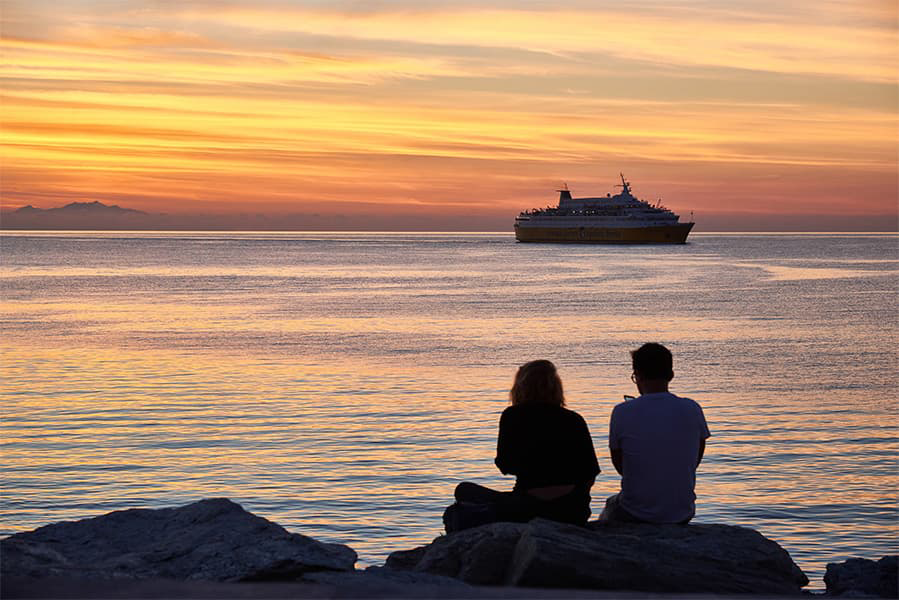Athens (Rafina) – Syros
Ferries to Cyclades Islands
Athens (Rafina) – Syros
Ferries to Cyclades Islands

The Athens (Rafina) Syros ferry route is currently not sailing. Athens (Rafina) Syros sailing durations and frequency may vary from season to season. View our Deal Finder for alternative routes and compare prices, times and schedules.
More routes than anyone else.

Compare fares, times & routes in one place.
Change plans easily with flexi tickets.

Book e-tickets & manage trips in-app.
Live ship tracking & real-time updates.

Top-rated customer support when you need it.
The Greek town of Rafina lies on the east coast of the Attica region of Greece. The town, and its port, is on the Aegean Sea coast, to the east of the Penteli Mountains and to the north east of the Mesogaia Plain. The Greek capital, Athens, is 25 km to the west of Rafina which is close to the towns of Artemida and Nea Makri. It is a popular destination for Athenians, due to its proximity to Athens, who drive out of the city to Rafina to eat in one of the town's many fish restaurants that line the harbour. It is common to see the day's catch on display on beds of ice outside each restaurant.
Rafina's port is the second largest in the Attica region, after Piraeus, although this is likely to change by the port at Lavrio which is currently being expanded. ferries from Rafina's port depart to the southern part of Euboea and to most of the Cyclades Islands. Both conventional and high speed ferries operate to the islands with most departing Rafina in the morning.
The Greek island of Syros is one of the Cyclades group of islands and is unusual in that the island's architecture is more medieval rather than the more typical Cycladic. The island's capital is Ermoupolis and has some fine examples of Venetian mansions to see. In the Vaporia quarter of the capital visitors will find some lovely large churches and impressive neoclassical buildings, such as the Town Hall and Apollo Theatre in the central square. Also popular with visitors are the island's beaches which are well equipped for tourists and have a good range of facilities.
The island can trace its history back to the 3rd millennium BC where signs of inhabitation have been found in the Halandriani and Kastri parts of the island. Artefacts found indicate that there was some kind of metal workshop on the island which possibly had a trading relationship with Asia Minor. The Samians occupied the island in the 6th century BC and is when many of the island's inhabitants moved to the island. At that time, the important physician and philosopher Pherecydis was born in Syros and some years later he went to Samos and became the teacher of Pythagoras.